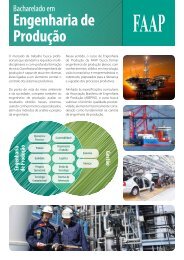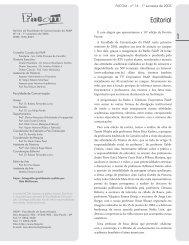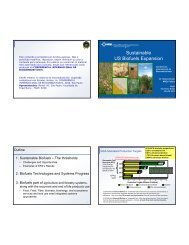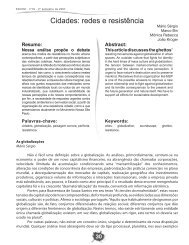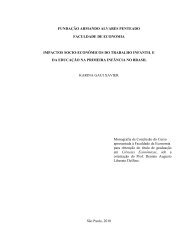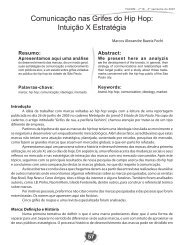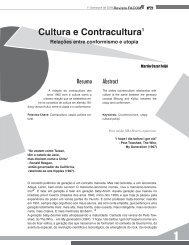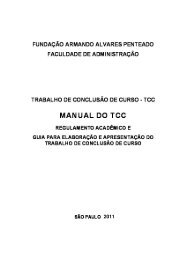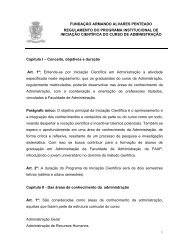Número 8 - Janeiro 2006 - Faap
Número 8 - Janeiro 2006 - Faap
Número 8 - Janeiro 2006 - Faap
Create successful ePaper yourself
Turn your PDF publications into a flip-book with our unique Google optimized e-Paper software.
Trade challenges in a<br />
globalizing imbalanced world<br />
Rubens Ricupero *<br />
Summary: The article deals with the complex relationship between the<br />
current state of the world economy and recent patterns of international<br />
trade. More specifically, it analyses the symbiosis between China, Japan<br />
and Asia in general, on the one hand, and the USA, on the other, and how<br />
this association between reciprocally dependent economies has been<br />
providing for many years the major source of import demand growth in a<br />
world where Japan and the European Union have been suffering from<br />
sluggish domestic demand. The article argues that this state of affairs should<br />
be described as one of “stable disequilibrium”, instead of “unstable<br />
equilibrium”, as the emphasis rightly belongs to relative stability, albeit<br />
imbalanced. It equally describes the current deadlock in trade negotiations<br />
and the likely tendencies of the multilateral trade system.<br />
Keywords: trade, stable, disequilibrium, exchange rate fluctuations.<br />
Far from pretending to offer you a scholarly presentation, full of certainties and<br />
abstract arguments, my aim is to conduct in your company an exploration through the<br />
jungle of our daily insecurities and uncertainties. My subject is trade and economic life<br />
as they are, here and now, and not as they are supposed to be in the textbooks. That is<br />
why the narrative will at times resemble a collage of yesterday’s newspaper clippings and<br />
not a dry economic report punctuated by characteristic curves, graphs and figures.<br />
Our starting point will be an apparent paradox. Last year was one of the very<br />
best in 30 years in terms of the expansion of the world economy – above 5% – and<br />
of international trade – more than 9%. At the same time, 2004 was the year that<br />
the US current account, trade deficits and budget deficit all reached an<br />
unprecedented grave level – the signs of major disequilibria between that country<br />
and the rest of the world. We were taught that economic disequilibria, particularly<br />
of this gravity and affecting an economy that accounts for one quarter of the<br />
entire world output, are inherently a bad thing and will not last. Nonetheless,<br />
despite all dire predictions, year after year, the main features of the international<br />
economy have shown a remarkable and surprising stability amidst great uncertainty.<br />
* Rubens Ricupero is currently the Dean of the Economics and International Relations Faculty at Foundation<br />
Armando Alvares Penteado (FAAP), São Paulo. Previously, he was the Secretary General of United Nations<br />
Conference on Trade and Development (Unctad) in Geneva, from 1995 to 2004, Chairman of the GATT<br />
Contracting Parties (1991), of the GATT Council of Representatives (1990), Minister of Finance of Brazil<br />
(1994), Minister of the Environment and the Amazonian Affairs of Brazil (1993). This text was written in<br />
early March 2005, as the Annual Commencement Day Lecture of the Export-Import Bank of India, Mumbai.<br />
The best proof of the correctness of its central thesis is that, ten months later, nothing practically has changed<br />
in the world economy, except the Chinese mostly symbolic gesture of allowing for an extremely limited<br />
fluctuation of the renmimbi.<br />
84 Revista de Economia & Relações Internacionais, vol.5(8), jan.<strong>2006</strong>





